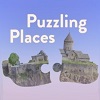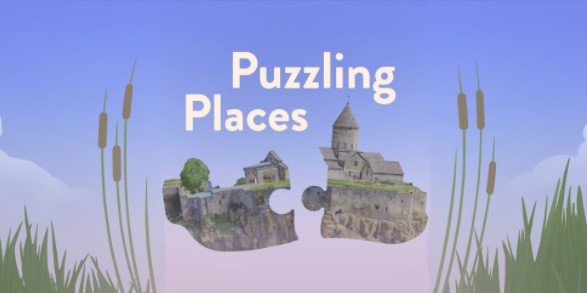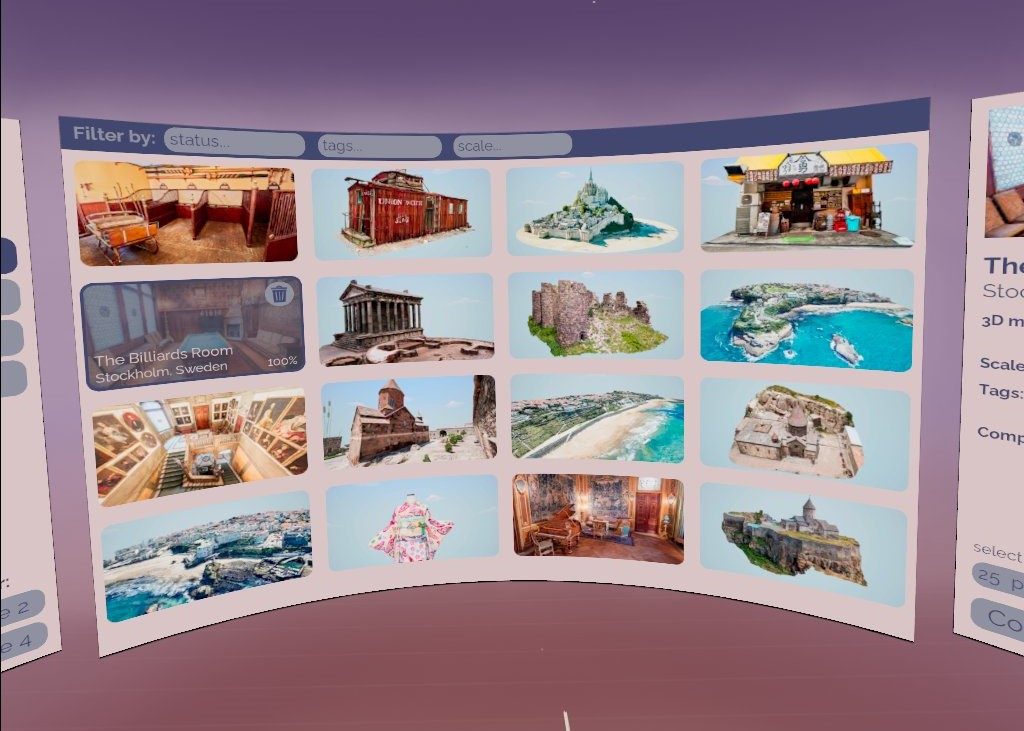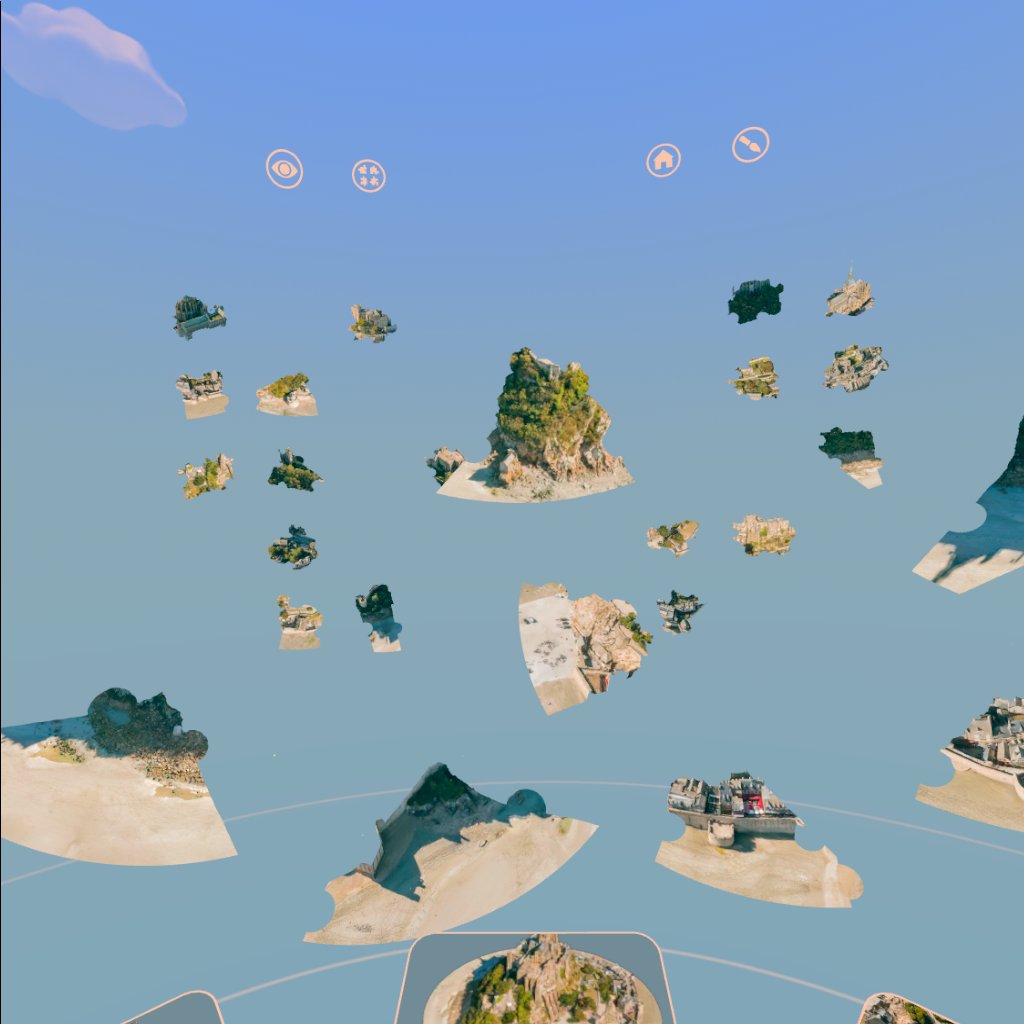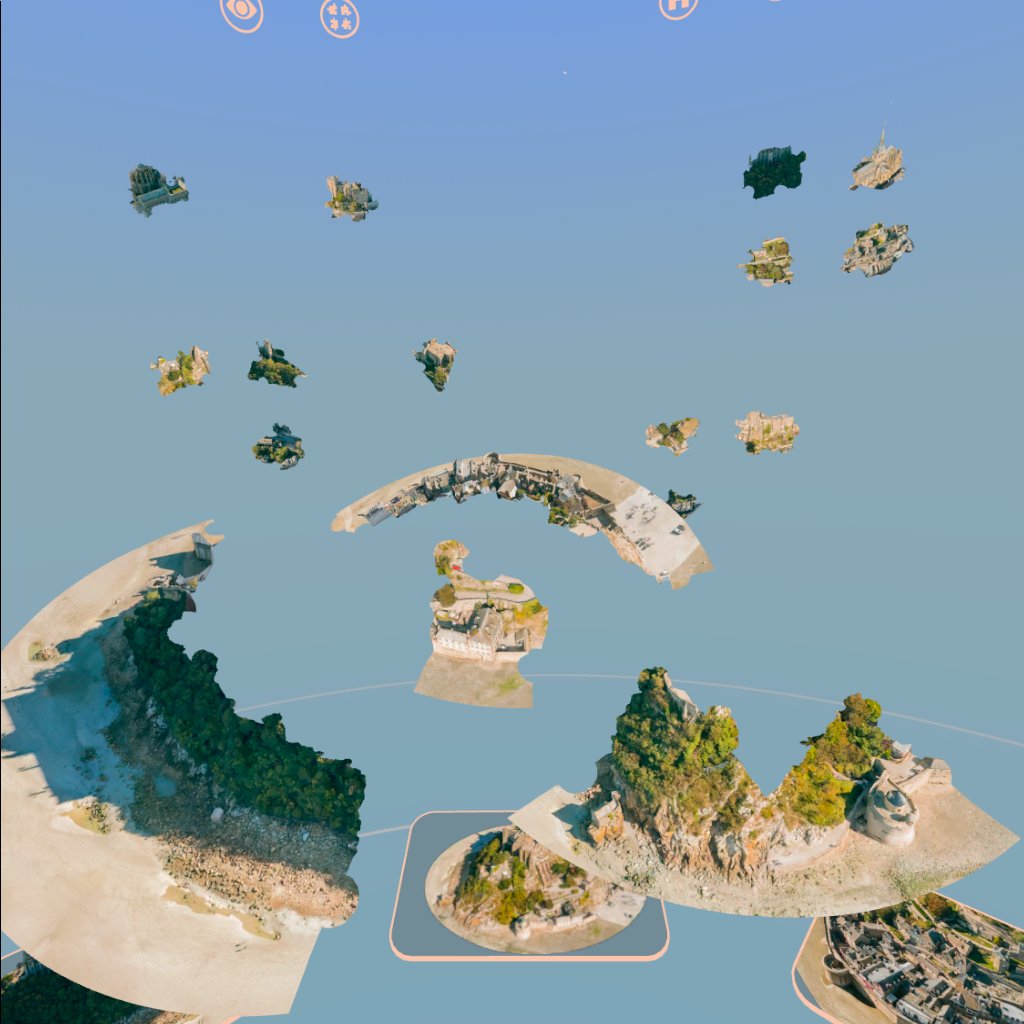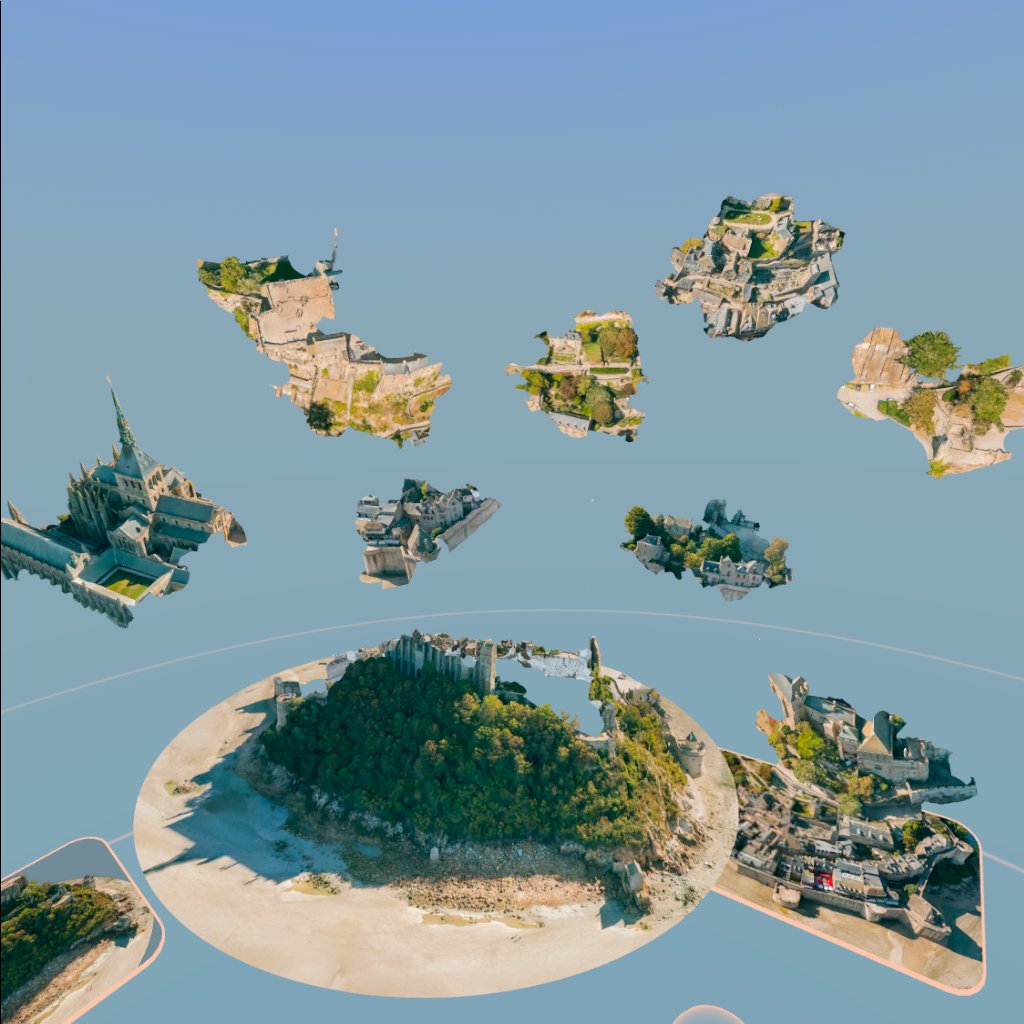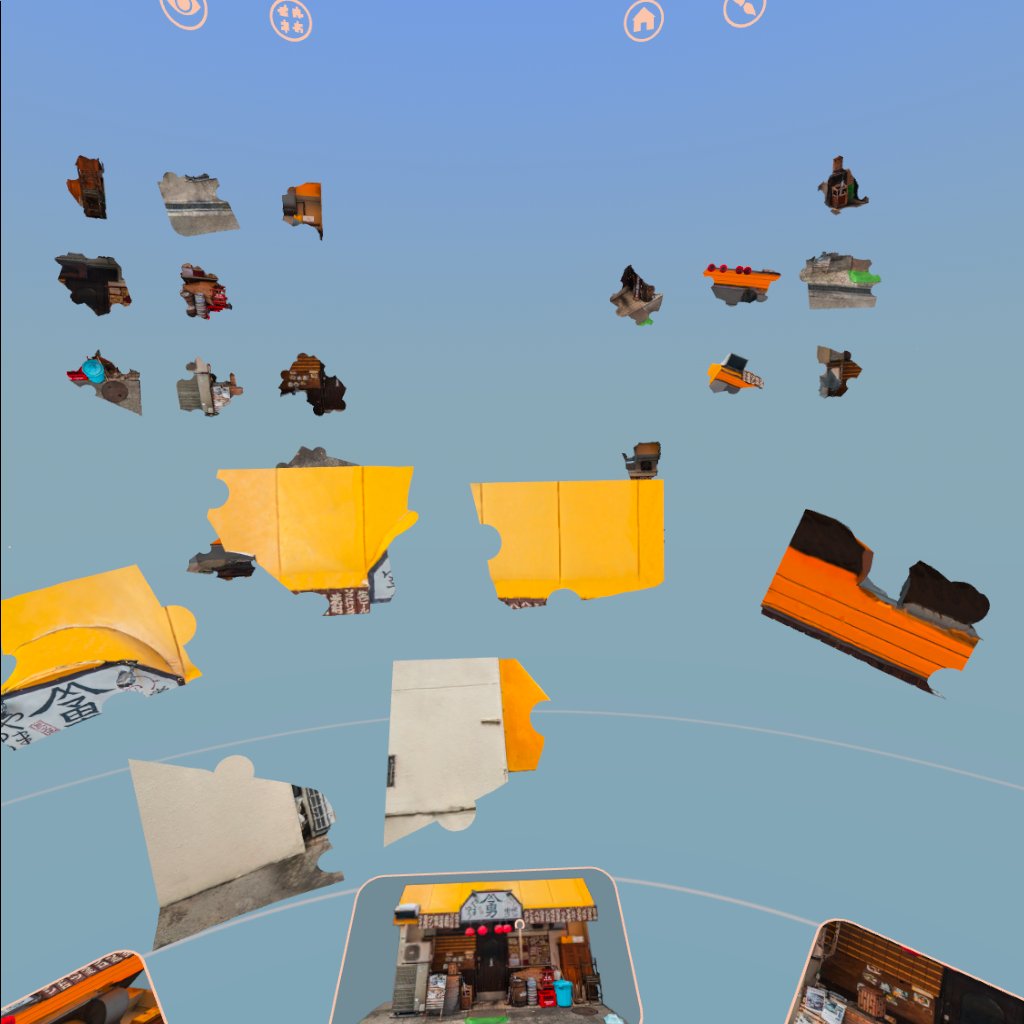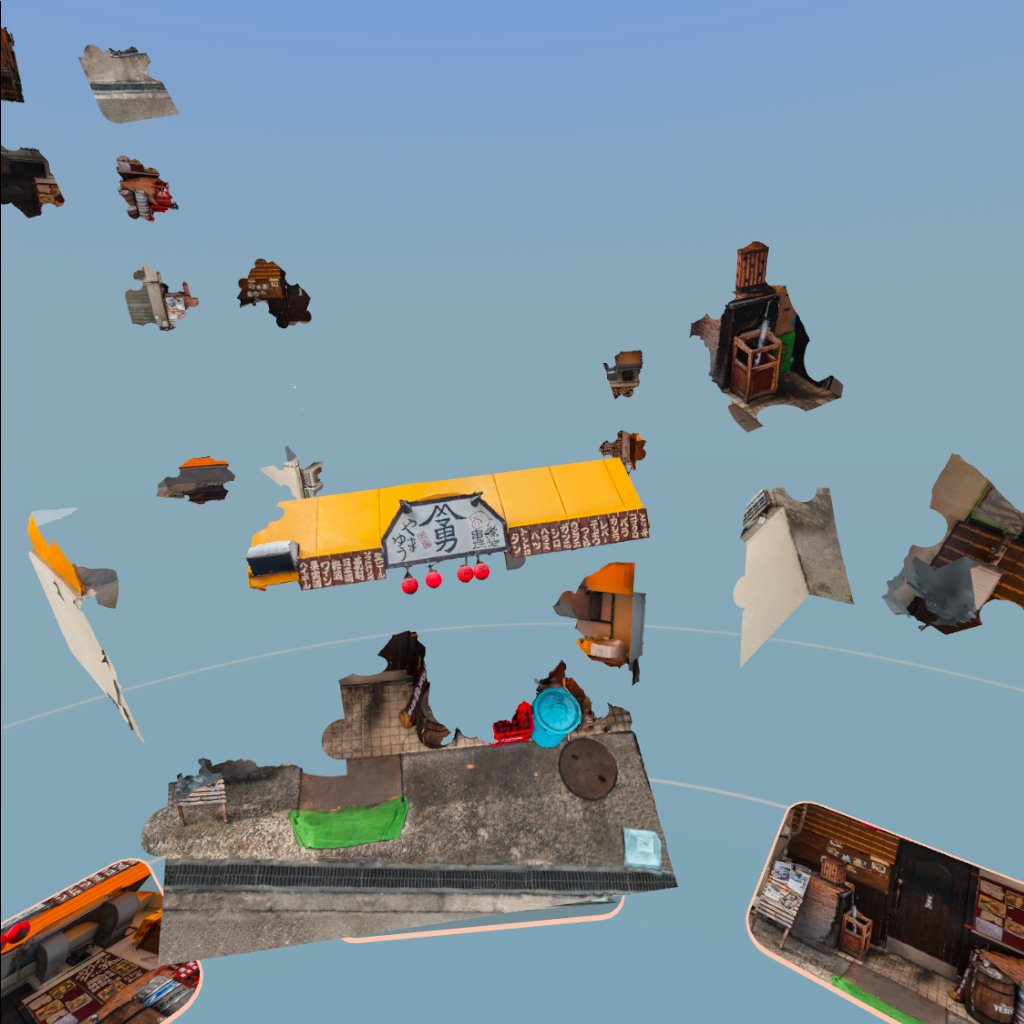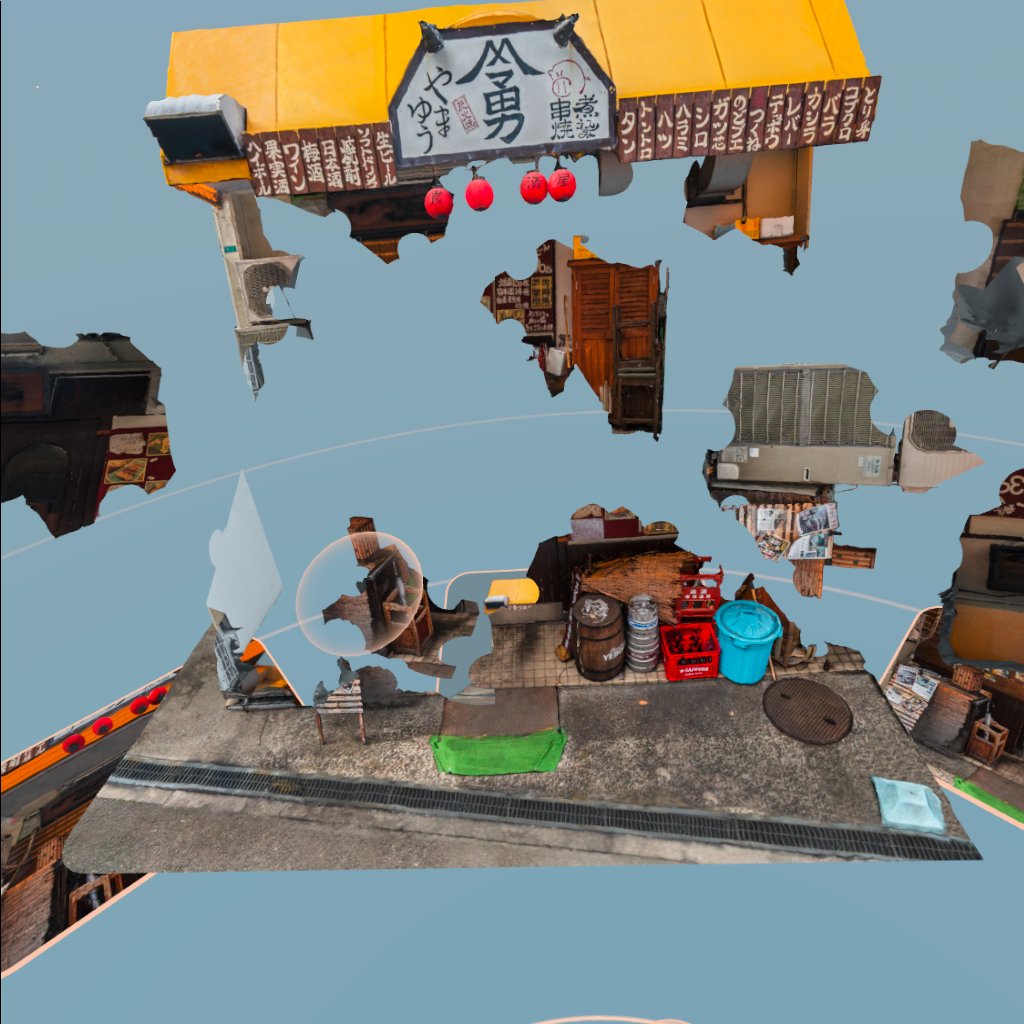Puzzling Places-Quest 2 VR
Editors’ Choice Games
September 2021
Puzzling Places-Quest 2 VR
Review by Angie Kibiloski
I’ve always been a huge fan of puzzles, both standard tabletop editions, as well as the 3D variety, whether those were the foam buildings that were popular in the early 2000’s, or the translucent plastic kind that you see around nowadays. When I saw there was a brand new puzzle app for Oculus Quest 2 out this month, I was thrilled, and it ended up being even more enjoyable than I’d hoped. Puzzling Places ($14.99), from Realities.io, is a combination puzzle and model building app, allowing you to construct 3D renderings of famous landmarks from around the world, in beautiful detail, all while standing or sitting in a peaceful, colorful void. There are 16 puzzles to start with, including the French coastal city of Biarritz, and Stockholm’s Hallwyl Museum, each playable in a variety of difficulty levels, from a casual, yet satisfying 25 pieces, all the way up to a challenging 400 pieces. This is a great starter set, and more content is set to be added in the future. So, if you’re a puzzling fan, this app will provide you with hours upon hours of constructive fun.
The 3D models were made by using high-res photogrammetry scans of the landmark locations, by either in-house scanning teams travelling to those sites, or sourced from a partner scanning company. Photogrammetry scans are made by stitching together thousands of images from DSLR cameras, drones, and even LIDAR, if the location has spots inaccessible to standard imaging. After the images are collated together, digital cleanup takes place, fixing places where the images don’t quite match up, or filling in blank spots that didn’t get scanned properly. The result is a detailed, 3D model that looks like a faithful miniature of the real-world spot, from every angle you could view it. The tiny details achieved in each model really entice you to get your eyes very close to every angle of the room or landscape, to admire the miniature scene you’re holding in your hands. I whacked myself in the headset with my hand controllers multiple times, because I was so enthralled with seeing all the details, that I just kept getting closer, and closer, until I ran into myself. I think I spent just as much time peering at every corner of each model as I did actually fitting the puzzle pieces together. Those puzzle pieces aren’t the typical jigsaw-shaped pieces you see in other puzzles. Instead, they look more like if you broke chunks off of the completed models, making them all very irregular and interestingly shaped.
When you load up the app, the AI will detect whether you’re sitting or standing, and adjust your view to suit. I enjoyed doing puzzles in both positions, but I did prefer to be seated for longer sessions. The main game menu makes it easy to choose a puzzle from the thumbnails, then select how many pieces you want to work with. You can also view an instruction sheet for all the controls, like how to grab, move, and place piece, and what the 3 Tools icons are for, though I found the controls were intuitive enough without that reference guide. Once you’re in the game space itself, you’ll be surrounded by a peaceful fog and gentle ambient sounds. Your pieces will be scattered across an invisible “shelf” in the distance, underneath 4 icons, with an array of reference images at your feet. These images will show different angles of the finished model, and act as a back-of-the-box image to help you navigate the puzzle. You can toggle these off if you’re the kind of puzzler who never looks at the box. To play, simply point at the piece you want to bring towards you with your trigger button, and it will zoom into your personal space. You can then grab it with either hand, and set it anywhere in the space that you want, on any axis. When you connect 2 pieces, you’ll hear a sound and see an illumination, as they get fused together. You can rotate small or large chunks of the puzzle, set them down, move them aside, or send them back up to the shelf if you don’t need them right away. A really cool feature is the ambient soundscape, native to each different location, which develops as you put more and more of the pieces into place. For instance, put together the pieces of a billiards table, and start hearing balls being hit, or complete the wooden floor of a gallery and start hearing footsteps of visitors. This adds a really immersive element to the experience, and almost makes you feel like you’re really visiting these locations. When you complete a puzzle, you’ll be treated to some subtle fireworks, and have a chance to look at your masterpiece for as long as you like, before hopping back to the home screen to choose another model.
There are 3 handy Tools to help in your puzzling endeavor, accessible by little circular icons in the play space. With the Color-Picker Tool, you can customize the colors of your void, and engulf yourself in whatever hue best suits your puzzling mood. The Grouping Tool is vital for larger piece counts, to give you the ability to gather and separate collections of pieces from one another. You could group similar colored chunks, or group what you think might be the edges of the model, just like you would do with a tabletop puzzle. You don’t have to use this tool, and for the 25-piece difficulty level I found that I didn’t need it, but it does come in handy if you have a lot of small bits to keep track of. Especially if you’re working with a landscape model that is all similarly colored, this tool can eliminate some of the chaos of a 400-piece array. The See-Through Tool, which you can attach to any side of a puzzle, is very helpful when placing interior pieces together, or just to look around after you’ve finished it. It was very useful when trying to see inside smaller areas, though I also found it quite fun to just stick my virtual face right through the walls. There are several other preferences and features that you can toggle on and off in the Settings menu, to customize your game to your personal puzzling style, but I’ll let you discover those on your own.
I honestly can’t get enough of Puzzling Places, and I anticipate spending many relaxing hours in this app, sitting in my pink pastel void, next to my random decorative cattails that sprout from the ground, and reconstructing these gorgeous set pieces. I encourage any puzzle-lover who is reading this to check out the app page in the Oculus Quest Store, to see more photos and videos than those from my own play time, which I’ve posted in this review. Then, if you’d like to learn more about the developers, where they got the idea to make this kind of game, and how each model was crafted, pop over to the Oculus Blog and read an interesting interview with several of the key designers of the app. You can also chat with them over on their Discord channel. For a further taste of the game without leaving this page, you can watch me construct the 25-piece set of the Billiards Room in my short game play video below. If you notice any shakiness when I’m rotating the pieces in the video, that’s not the fault of the app, but my own clumsy hands.

